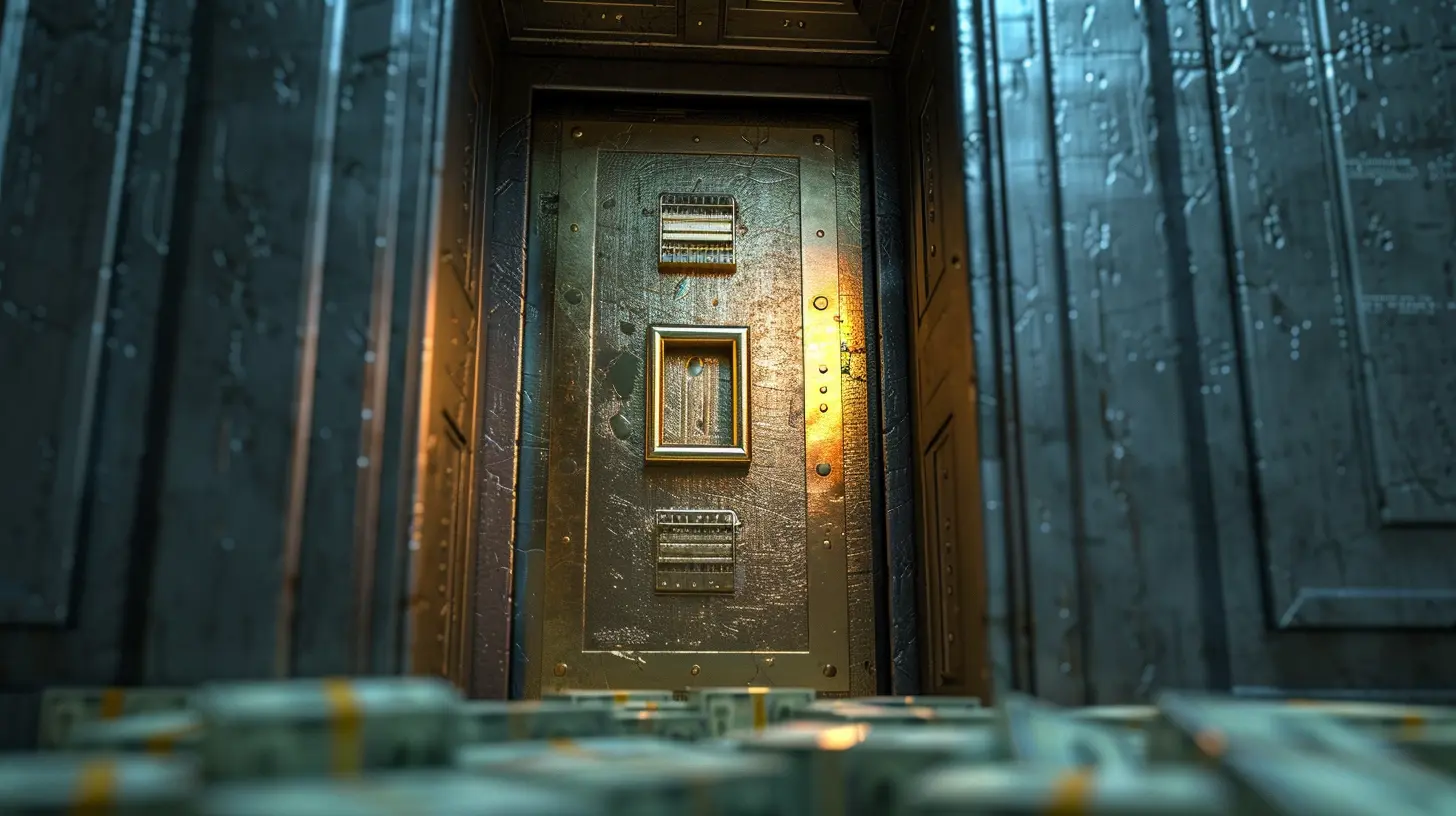How Backdoor Roth IRAs Benefit High-Income Individuals
15 October 2025
If you’re a high-income earner, chances are you’ve hit a few snags trying to stash your money into a Roth IRA. It’s frustrating, isn’t it? You work hard, make a solid income, and yet the IRS tells you, “Sorry, you earn too much to contribute directly to a Roth.” But here’s the good news — there’s a sneaky little strategy called the Backdoor Roth IRA that can help you slide around those income limits and still enjoy all the sweet benefits of a Roth.
So, what is this financial hack high earners are talking about? Sit back, grab your coffee, and let’s break down what makes Backdoor Roth IRAs such a hidden gem.
What Is a Backdoor Roth IRA?
Let’s start simple.A Backdoor Roth IRA isn’t a special type of account. It’s just a strategy — a legal workaround for folks like you who earn too much to contribute directly to a Roth IRA.
Here’s the basic idea:
1. You contribute after-tax dollars to a Traditional IRA (where there are no income limits).
2. You quickly convert that money to a Roth IRA.
3. Boom — you now have Roth money growing tax-free.
Sounds like magic, right? Well, it’s totally legit and used by savvy high-income earners all the time.
Why Can’t High-Income Earners Contribute to Roth IRAs Directly?
The IRS puts income caps on Roth IRA contributions. For 2024, if you’re single and earn over $153,000 or married filing jointly and earning over $228,000, you’re completely phased out from contributing to a Roth IRA the usual way.Frustrating, yes. But understandable. Roth IRAs are a major tax break — you contribute post-tax dollars, and your money grows tax-free forever. Plus, you can withdraw it in retirement tax-free too.
To keep things “fair,” Congress wanted to limit who can take advantage.
But here’s the twist…
There’s no income limit on converting money from a Traditional IRA to a Roth IRA. Voilà — the "backdoor."
The Mechanics of a Backdoor Roth IRA
Let’s walk through the steps together. Doing a Backdoor Roth IRA is simpler than it sounds.Step 1: Open a Traditional IRA
First, open a Traditional IRA if you don’t already have one. This is where your journey begins.You’ll contribute your after-tax dollars here. For 2024, the contribution limit is $6,500 (or $7,500 if you’re over 50).
Step 2: Make a Non-Deductible Contribution
Since your income is too high to deduct IRA contributions, you’ll be making a non-deductible contribution. That means you’re putting money in that’s already been taxed.This is crucial. Because when you convert to a Roth, you won’t owe taxes on this part again.
Step 3: Convert to a Roth IRA
Here’s where the magic happens. Once your money is in the Traditional IRA — ideally within days — convert it to a Roth IRA.The idea here is to minimize any earnings before the conversion (because earnings might be taxable). So don’t wait too long to do the transfer.
Step 4: Report It on Your Taxes
You’ll need to file IRS Form 8606 to report a non-deductible Traditional IRA contribution and the Roth conversion. This step is non-negotiable. Your CPA or tax software can handle it.
Be Aware of the “Pro Rata Rule”
Okay, real talk — this is where things can get tricky.If you already have money in Traditional, SEP, or SIMPLE IRAs, the IRS considers all your IRAs as one when calculating taxes on conversions. This is the pro rata rule.
That means when you do the Roth conversion, the IRS figures out what percentage of your IRA is non-deductible (after-tax) and applies that percentage to your entire conversion.
In plain English? If you’ve got pre-tax money in other IRAs, you might owe some taxes on the conversion.
But there’s a workaround: roll other pre-tax IRA money into a 401(k) plan if your employer's plan allows it. That clears the slate and lets you keep the conversion clean and mostly tax-free.
The Perks of a Roth IRA – Why Go Through All This?
So why jump through hoops for a Backdoor Roth IRA?Because Roth IRAs are like the unicorn of retirement accounts. They’re rare, magical, and totally worth chasing if you qualify. Here’s why high-income earners like you should seriously consider this move:
1. Tax-Free Growth and Withdrawals
This is the biggie. Once your money’s in a Roth IRA, it grows tax-free. And when you retire? You take the money out tax-free too.Imagine building a retirement nest egg that the IRS can’t touch. That’s huge, especially if you expect tax rates to rise in the future.
2. No Required Minimum Distributions (RMDs)
Unlike Traditional IRAs, Roth IRAs don’t force you to start pulling money out at age 73.Translation? You can let your money sit and grow for as long as you like. Or pass it on to your heirs tax-free. That’s powerful estate planning.
3. Flexibility in Retirement
Having a tax-free bucket of money in retirement gives you options. You can withdraw from it in high-income years without pushing yourself into a higher tax bracket. It also gives you more control over your tax picture.Think of it as financial agility — and who doesn’t want that?
Why High-Income Individuals Shouldn't Ignore This
Let’s get honest. High-income individuals often face a slew of tax challenges. You probably pay more taxes than the average person, and finding ways to reduce your future tax burden becomes crucial.The Backdoor Roth IRA is one of those rare legal opportunities to do just that.
You’re playing the long game here — setting yourself up for a more tax-efficient retirement, building legacy wealth, and creating flexibility later in life. Sounds like a win to me.
Real-Life Scenarios: How It Pays Off
Still on the fence? Let’s run through some examples.Scenario 1: The Corporate Executive
Jane earns $250,000 a year. She maxes out her 401(k) but wants to save more for retirement. Since she can’t contribute to a Roth directly, she uses the Backdoor Roth IRA strategy each year.Over 10 years, she contributes $6,500 annually. That adds up to $65,000 in contributions that now grow tax-free for decades. At a modest 7% return, that’s over $120,000 for retirement — all completely tax-free.
Scenario 2: The Entrepreneur with Old IRA Funds
Mark has $200,000 in a Traditional IRA but wants to start doing Backdoor Roth IRAs. He rolls the $200K into his company’s Solo 401(k), clearing the way to make non-taxable conversions.Now he’s adding more tax-advantaged fuel to his retirement plan every year, avoiding the pro rata rule.
Common Myths About Backdoor Roth IRAs
Let’s squash some myths real quick:- “It's an IRS loophole — too good to be true.”
Nope. It’s been around for years and is well within the law. Congress knows about it, and it hasn’t been shut down.
- “It’s too complicated; I’ll mess it up.”
The process might sound technical, but it’s manageable, especially with a good tax advisor or financial planner.
- “I’ll wait until retirement to think about this.”
The earlier you start, the more time your money has to grow tax-free. Time is your biggest ally here.
Should You Do a Backdoor Roth IRA Every Year?
Short answer? Yes — if you can.It’s like planting a new tax-free tree in your retirement garden every year. Over time, you’ll have a blooming orchard instead of a few scattered bushes.
Even if it’s just $6,500 or $7,500 a year, that adds up. And thanks to compounding, small contributions snowball into sizable wealth down the road.
Who Should Avoid the Backdoor Roth IRA?
Truth time. This strategy isn’t for everyone.- If you already have a large Traditional IRA and can’t roll it into a 401(k), the pro rata rule might make conversions pretty taxable.
- If you plan to need the funds soon, Roth contributions need to sit for 5 years before tax-free withdrawals.
- If you're not comfortable with the administrative steps (or if you hate paperwork), you’ll need help to get it right.
Final Thoughts: Is the Backdoor Roth IRA Worth It?
Absolutely — for most high-income earners, it’s a no-brainer.It’s one of those rare financial tools that takes a little effort but pays off hugely in the long run. It helps you build a tax-free future, sidestep RMDs, and gain more control over your retirement income.
Think of it like this: the Backdoor Roth IRA is your VIP pass into the Roth club. You're not breaking the rules — you’re just entering through the service entrance.
So if you haven’t started already, talk to a financial advisor or CPA. Set it up. Make it automatic. Your future self (gray hairs and all) will thank you for it.
all images in this post were generated using AI tools
Category:
Roth IraAuthor:

Harlan Wallace
Discussion
rate this article
1 comments
Tala Miller
Backdoor Roth IRAs offer a strategic advantage for high-income earners, allowing them to bypass income limits on traditional Roth IRA contributions. This maneuver enables tax-free growth and withdrawals in retirement. It's crucial for individuals to understand the implications, risks, and proper execution of this strategy for optimal financial benefits.
November 4, 2025 at 5:59 AM


